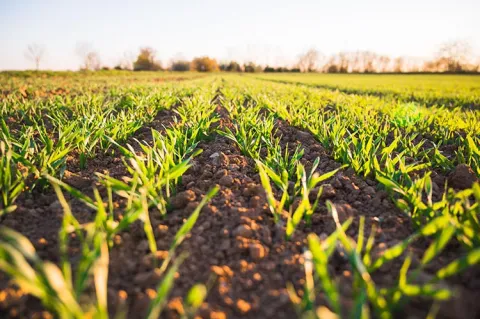Carbon Credits: Are They Something We Need to Think About?

Farmers across Tennessee have been carbon farming for years without realizing it. Common practices such as no tile and cover crops are prime examples of implementations that allow for this so-called carbon farming.
Big companies such as Delta, General Motors, Honeywell, Microsoft, Target, and many others have started to become interested in these endeavors.
Indigo Agriculture, a huge player in the agriculture industry of today, has a mission statement of improving grower profitability, environmental sustainability, and consumer health through the use of natural microbiology and digital technologies.
One initiative that has recently come to surface is carbon farming and the purchasing of carbon credits.
Along with these fortune five hundred companies, the United State Department of Agriculture (USDA) has started an initiative program for farmers to take up these practices.
Commissioner Dr. Charlie Hatcher, the 38th Commissioner of Agriculture in the state of Tennessee, has worked with numerous national agriculture leaders in order to put Tennessee on the map for agriculture and innovation.
“The hardest challenges for the state, for the next decade, is farm and forest conservation,“ Hatcher said.
Before readers get scared by the term “conservation” let us dive into what Hatcher means by this term. Hatcher is not saying that agricultural land should be taken and untouched in order to fulfill some sort of conservation plan, but rather agriculture land show be better managed in order to conserve the little land that is left for farming practices.
At this year’s annual Tennessee Farm Bureau Agriculture Industry Partners meeting Robert Bonnie, the USDA Under Secretary for Farm Production and Conservation stated that one of the key priorities for the USDA is to make agriculture one of the most competitive markets there is.
During Bonnie’s talk at this meeting he brought forth the thought that climate change is really an opportunity for agriculture.
While agriculture, specifically beef and dairy production, is said to cause a majority of greenhouse gases, the USDA published in 2018 that agriculture and forestry together is only estimated to account for 10.5 percent of the greenhouse gas emissions in the United States.
While agriculture does contribute to climate change, this is a time for farmers to change the way society perceives agriculture.
Union County can see some of the negative perceptions that society has surrounding agriculture, with recent concerns surrounding the poultry operation making its way into the community.
Farmers adopting these carbon farming practices could not only allow farmers to “cash in”, but also allow them to truly make a difference in the conservation of farm and forestry land in turn giving society a positive look on agriculture.
Bonnie shared with those in attendance that agriculture has the opportunity to produce negative amounts of green house gases with the simple adoption of these farming practices.
A few things that famers will soon see coming down the pipelines are incentives for adopting these practices as well as incentives surrounding cover crop and previously adopted crop insurance.
One of the biggest questions that the USDA and adopters of these practices have, is how will monitoring and measuring work?
The USDA is going to have to find a way for people to monitor and measure the amount of carbon that is trapped inside the soil before these practices are put into place as well as how to continually measure the growth of carbon that is being trapped over time.
Through trapping carbon in the soil, with farming practices such as no till and cover crops, the soil is practically left undisturbed, and carbon is unable to escape into the atmosphere.
While these programs have not made their way to East Tennessee yet, they are coming down the pipeline and they are something that farmers of all operation sizes need to consider as they begin to plan for their future harvest seasons.
Farmers and producers can find more information through visiting the USDA website as well as researching about carbon cycling and carbon farming practices.
- Log in to post comments